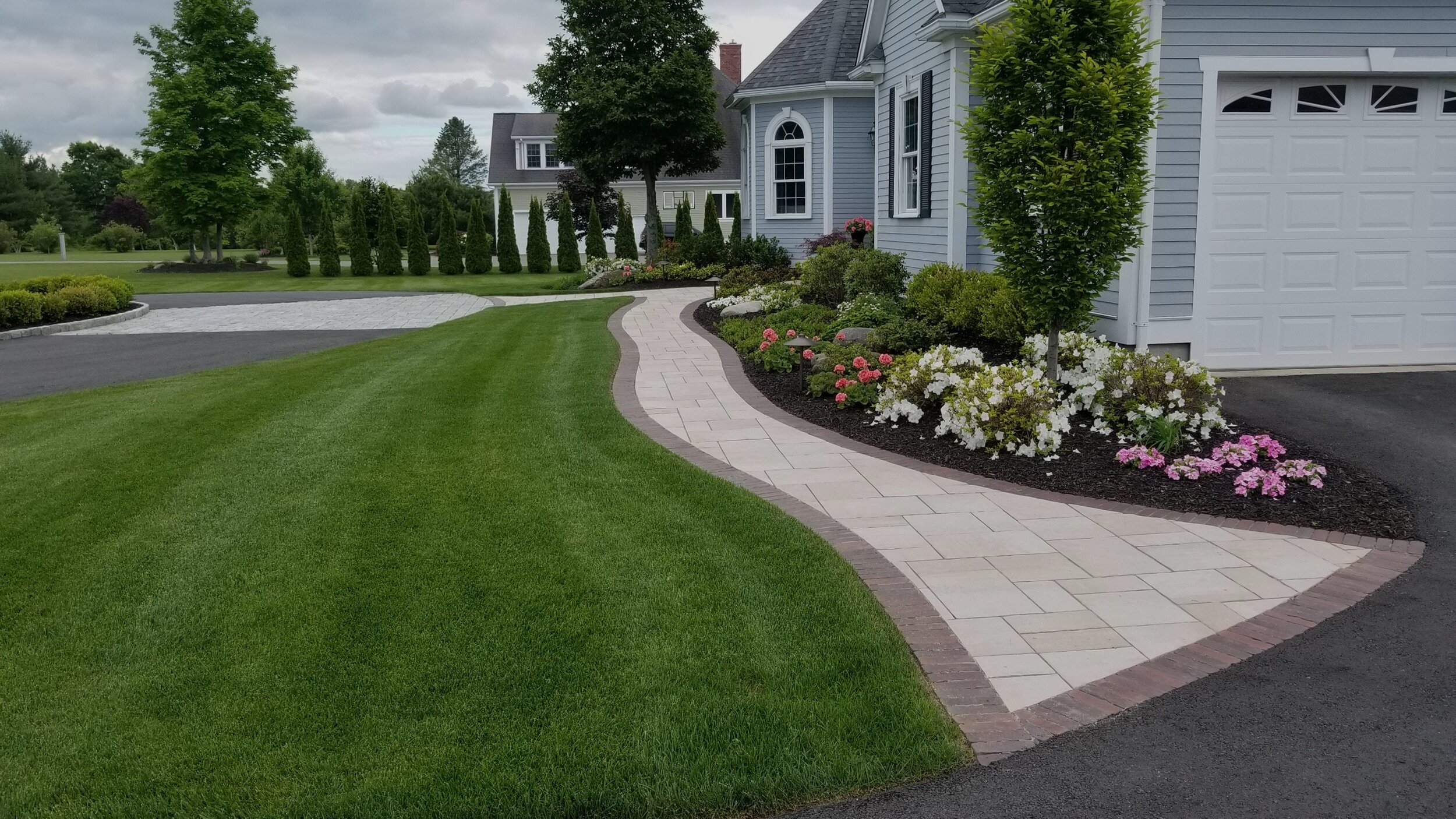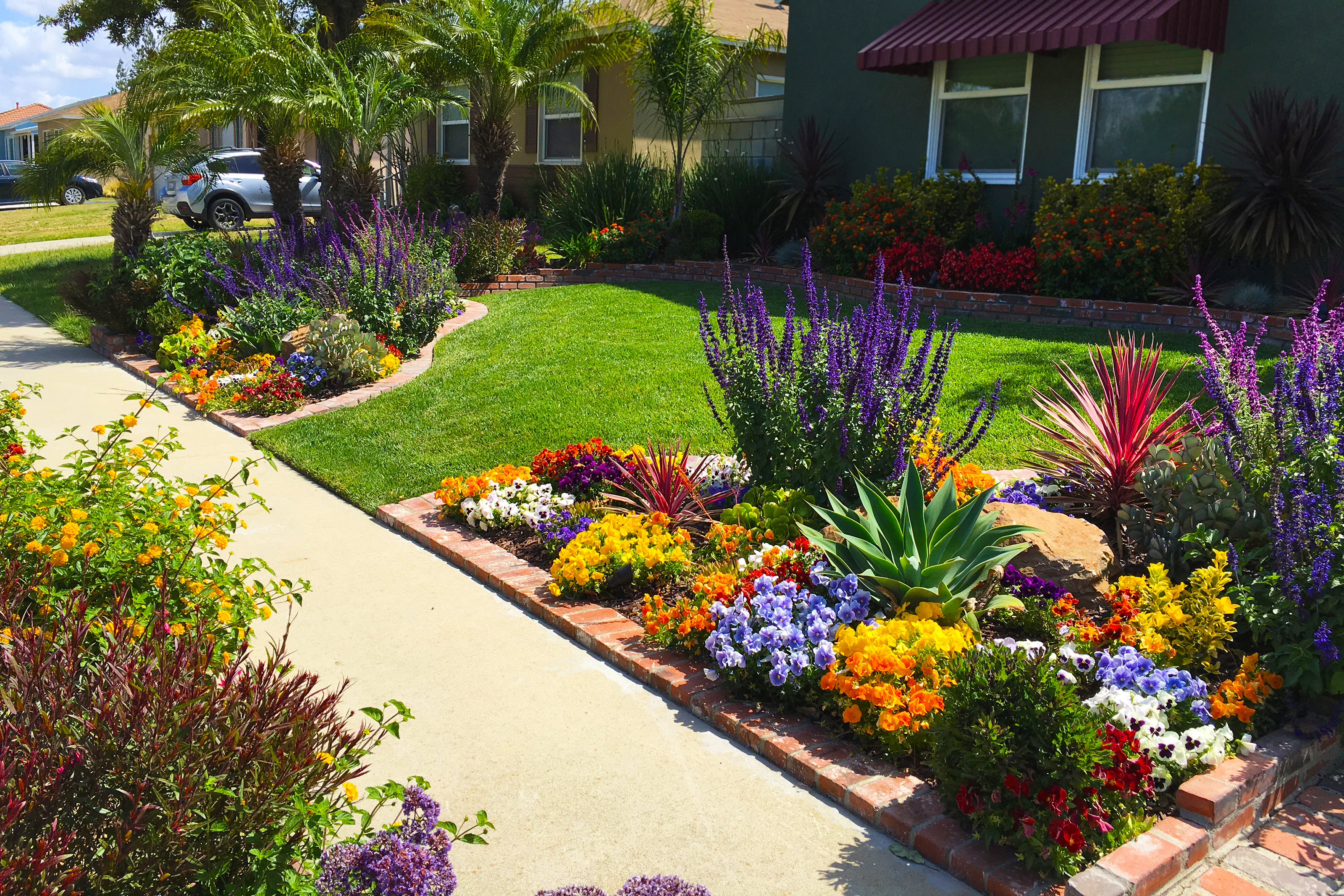Discover the Perks of Lasting Palm Desert Landscaping Techniques
Discover the Perks of Lasting Palm Desert Landscaping Techniques
Blog Article
A Comprehensive Guide to Designing and Implementing Effective Landscape Design Solutions
The art and science of landscaping prolong beyond mere visual appeals; they include a thoughtful integration of design concepts, ecological stewardship, and practical application. What approaches can one use to ensure these landscapes not just grow however also grow in consistency with their surroundings?

Comprehending Landscape Layout Principles
One might question what foundational components add to efficient landscape layout. At its core, successful landscape style pivots on several key concepts that guide the plan and selection of elements within a space. These principles consist of unity, balance, rhythm, and proportion, each serving to produce an unified exterior setting.
Unity refers to the cohesive connection among numerous elements, making certain that they collaborate visually and functionally. Equilibrium can be achieved via asymmetrical or balanced setups, enabling the landscape to really feel steady and welcoming. Proportion includes understanding the scale of elements in connection with each various other and the surrounding setting, promoting aesthetic harmony and convenience.

Assessing Your Outdoor Room
Before applying the concepts of landscape layout, a detailed analysis of your exterior space is essential. This preliminary assessment assists specify the extent of your landscape design task and ensures that your style aligns with the one-of-a-kind attributes of your residential or commercial property. Begin by analyzing the measurements of your area, taking accurate measurements to recognize the available location for numerous components such as gardens, outdoor patios, and pathways.
Following, observe the existing attributes of your landscape, consisting of topography, dirt top quality, and drainage patterns. These variables significantly influence plant selection and positioning. In addition, analyze the sunshine direct exposure throughout various areas throughout the day, as this will impact the sorts of plants that prosper in your garden.
Think about the microclimates produced by structures, trees, and various other barriers, as they can impact temperature and moisture degrees. Take note of any existing plants or hardscape elements that you desire to get rid of or maintain. This detailed assessment prepares for a well-informed and efficient landscape design solution, guaranteeing that your design is not just visually pleasing however also functional and lasting for years ahead.
Sustainable Landscape Design Techniques
These techniques not only promote environmental equilibrium yet additionally boost the aesthetic and useful worth of a landscape. Implementing efficient watering systems, such as drip irrigation, decreases water waste and guarantees that plants receive appropriate dampness (Palm Desert Landscaping).

Another efficient strategy is the strategic placement of shrubs and trees to supply all-natural windbreaks and shade, thus reducing power costs (Palm Desert Landscaping). Rain gardens can be incorporated into the landscape design to handle stormwater drainage effectively, filtering contaminants prior to they get in rivers
Choosing the Right Plants
Choosing the right plants for your landscape is crucial to achieving both visual charm and eco-friendly consistency. The process begins with an understanding of your regional climate, soil conditions, and the certain microenvironments within your landscape. Analyzing factors such as sunlight direct exposure, moisture degrees, and over at this website existing plants will help you pick plants that grow in your special setting.
Consider including native plants, as they are well-adapted to local problems, need less upkeep, and support local wild animals. Furthermore, selecting a diverse range of types can enhance biodiversity while decreasing the risk of disease and pest outbreaks. It is essential to evaluate the growth habits, flowering periods, and seasonal colors of prospective plants to create a cohesive and vibrant landscape.
Additionally, believe about the intended use of the room; for circumstances, if the location will experience high foot traffic, decide for durable ground covers. By thoughtfully choosing plants that straighten with both your aesthetic goals and ecological requirements, you can develop a lasting landscape that not only boosts your home but additionally adds positively to the bordering community.

Application and Upkeep Strategies
When the appropriate plants have actually been chosen for your landscape, the focus moves to reliable implementation and ongoing maintenance approaches. Successful installation begins with appropriate site prep work, which includes soil screening to establish nutrient degrees and pH, followed by amending the soil as needed. Meticulously arrange plants according to their growth habits and light requirements, guaranteeing appropriate spacing to advertise healthy and balanced development.
Watering is a vital aspect of application. Establish a watering routine that thinks about the certain demands of each plant varieties, readjusting for seasonal adjustments. Making use of drip watering systems can boost water performance and lower drainage.
Upkeep methods need to be carried out to make sure the durability and vitality of your landscape. Regular tasks consist of weeding, mulching, and pruning to regulate development and stop click here to find out more illness. Fertilization ought to be conducted based upon dirt tests, offering the necessary nutrients without over-fertilizing.
Keeping an eye on for insects and diseases is important; early detection can prevent significant damages. Seasonal adjustments to upkeep routines, such as preparing and winterizing perennials for springtime growth, will certainly guarantee that your landscape continues to be visually appealing and healthy and balanced year-round.
Verdict
Successful implementation and continuous upkeep better ensure the durability and vigor of landscapes. By incorporating these components, landscapes can be changed right into gorgeous, practical atmospheres that advertise biodiversity and add favorably to area well-being.
One might wonder what foundational elements contribute to effective landscape design. At its core, successful landscape style hinges on several essential principles that direct the plan and choice of elements within an area.Selecting the right plants for your landscape is important to accomplishing both visual allure and ecological harmony. It is vital to assess the growth practices, blooming periods, and seasonal colors of potential plants to create a natural and vibrant landscape.
When the best plants have actually been picked for your landscape, the emphasis moves to effective implementation and recurring upkeep methods.
Report this page